In pictures: Holme Fen Spitfire unearthed
- Published
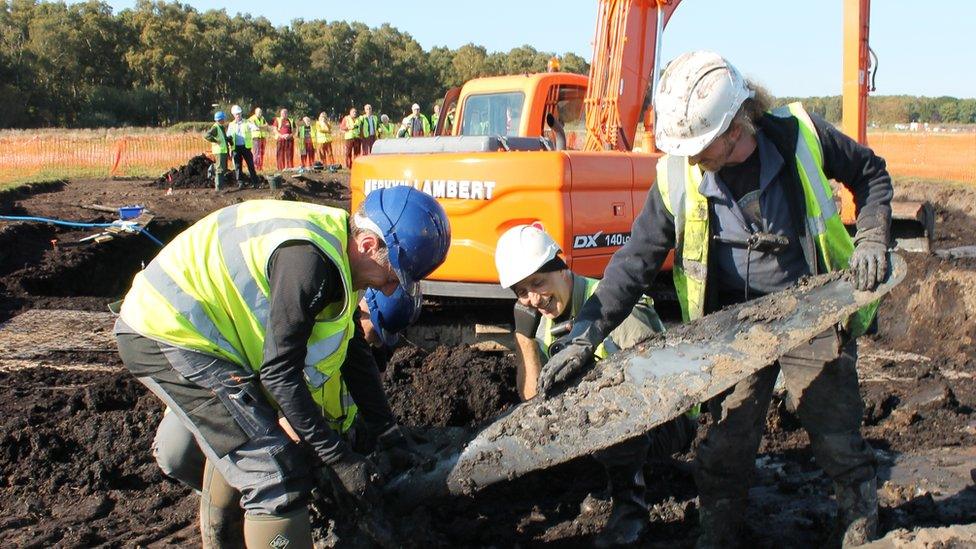
The propeller was removed on day five of the dig, as the excavation got down to the very base of the crater left behind by the crash in 1940 at Holme.
Experts have begun examining and cataloguing parts of a Spitfire excavated from a field in Cambridgeshire.
The plane crashed in Holme Fen during a 300mph (483km/h) training mission in November 1940, killing 20-year-old Pilot Officer Harold Penketh.
Experts from Oxford Archaeology East and Cranfield University have spent five days recovering the plane.
Its parts will be preserved and put on public display.
Here is the story of the excavation, told in photographs:
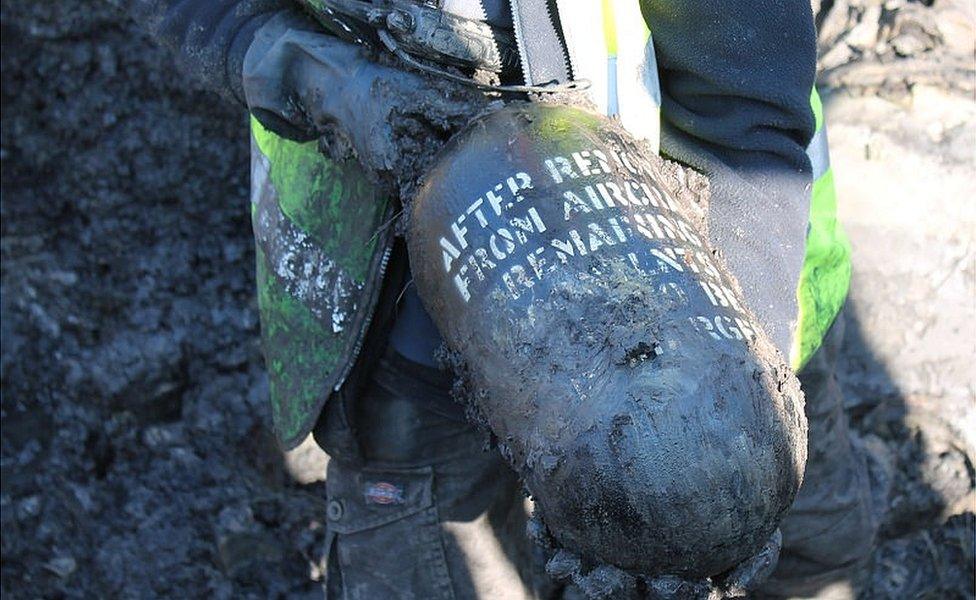
The oxygen cylinder: One of three theories of reasons for the crash was that it might have been caused by the failure of the Spitfire's oxygen system.
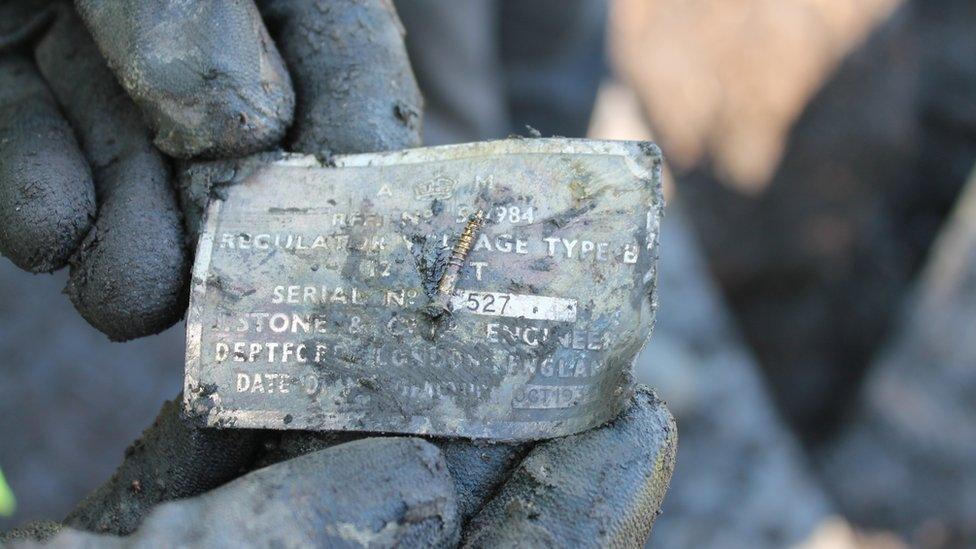
The regulator voltage plate is unique to the aircraft and one of the most important items for collectors.

The hunk of metal of the Merlin Engine found in the geophysical survey was the reason archaeologists knew exactly where to dig. It was this type of engine which allowed the Spitfire to outperform its German rivals.
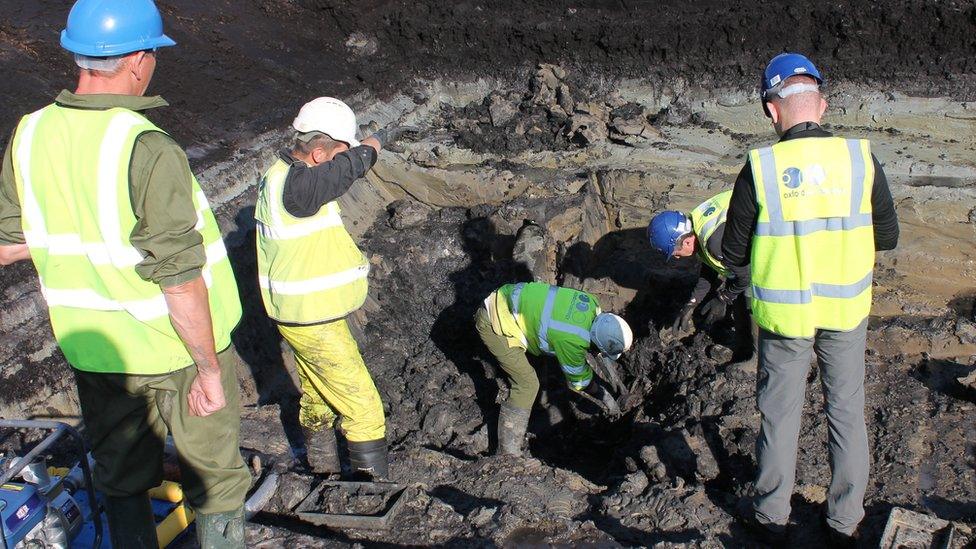
Examining the wing flap controls: Witnesses said the Mk 1A Spitfire X4583 broke formation and nose-dived into farmland in the village of Holme, south of Peterborough.

The engine was made by Rolls Royce, but the word "Rolls" was blasted off in the impact of the crash.
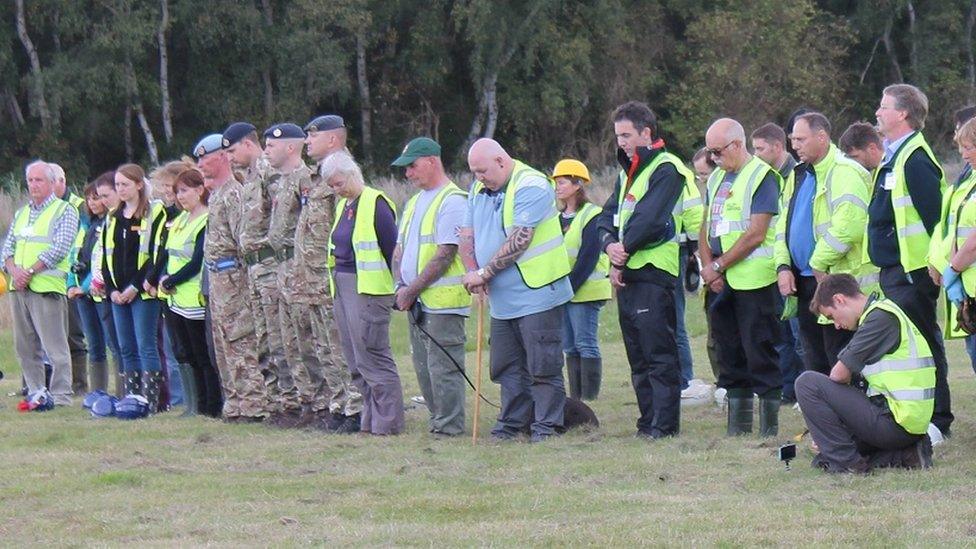
A minute's silence was held after a fragment of bone was found at the dig. Pilot Officer Harold Penketh, 20, from Brighton did not bail out and died.

Pilot Officer Harold Penketh's hat was left behind by the team who recovered his body, seven days after the crash on 22 November 1940.
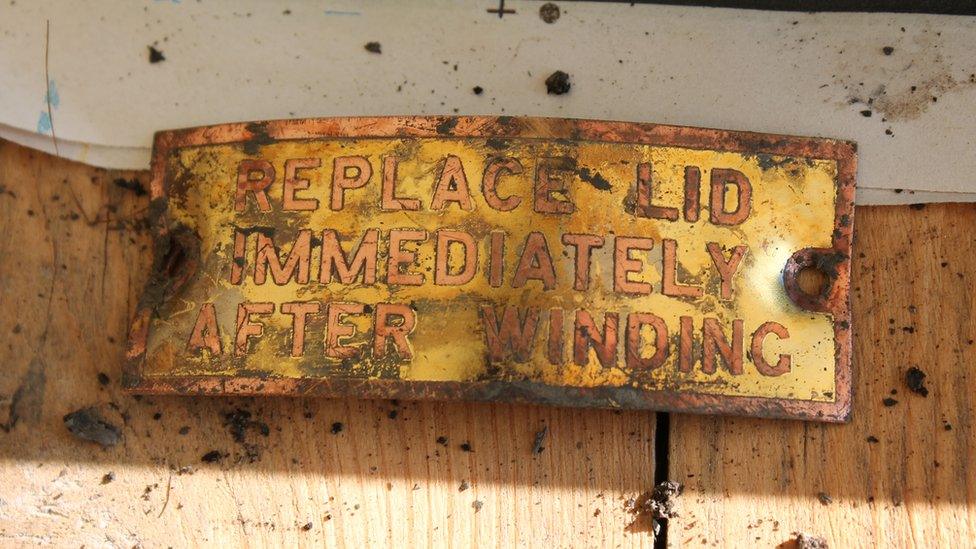
Items from the scene will be cleaned and documented and are expected to be put on display. Now the land is to be restored to a mix of fenland habitats and managed as part of the Great Fen reserve by the Wildlife Trust for Bedfordshire, Cambridgeshire and Northamptonshire.
- Published9 October 2015
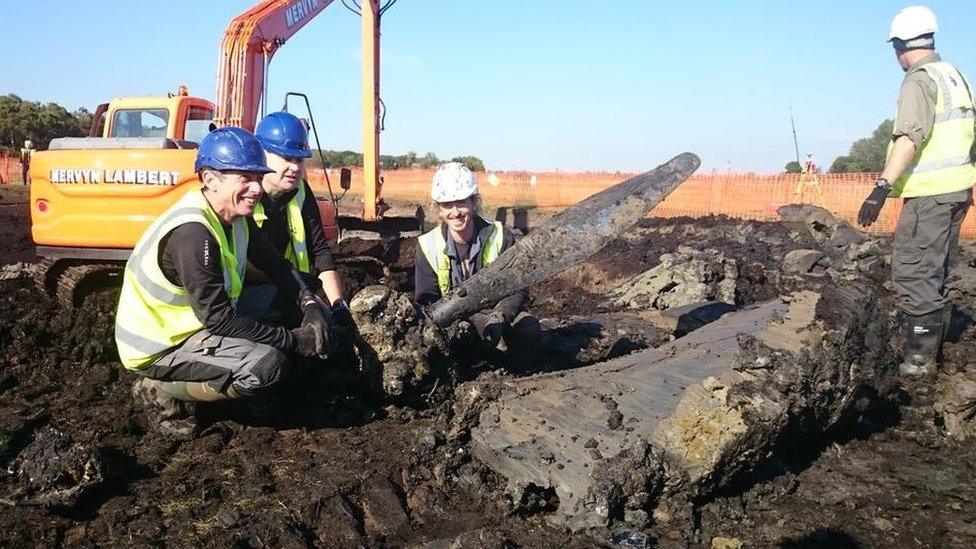
- Published8 October 2015
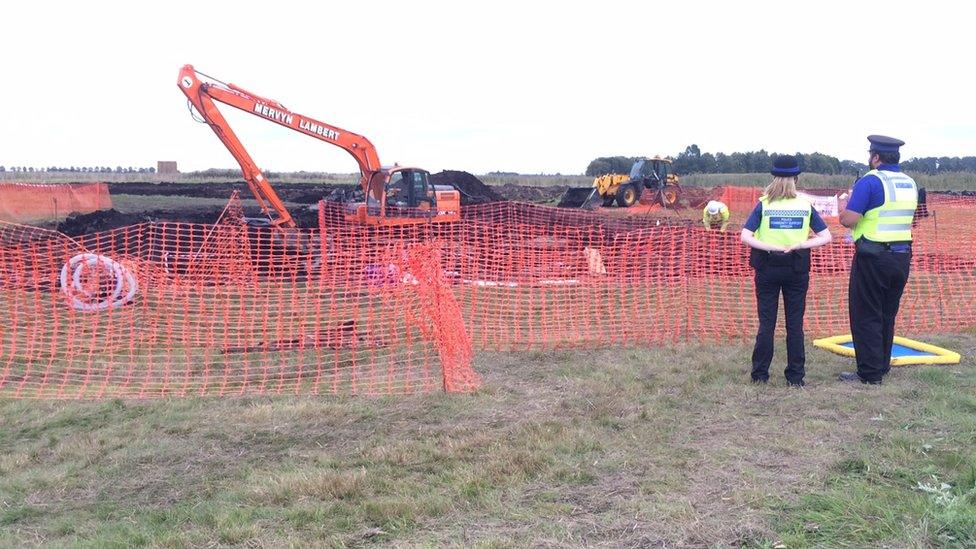
- Published5 October 2015

- Published7 October 2015
